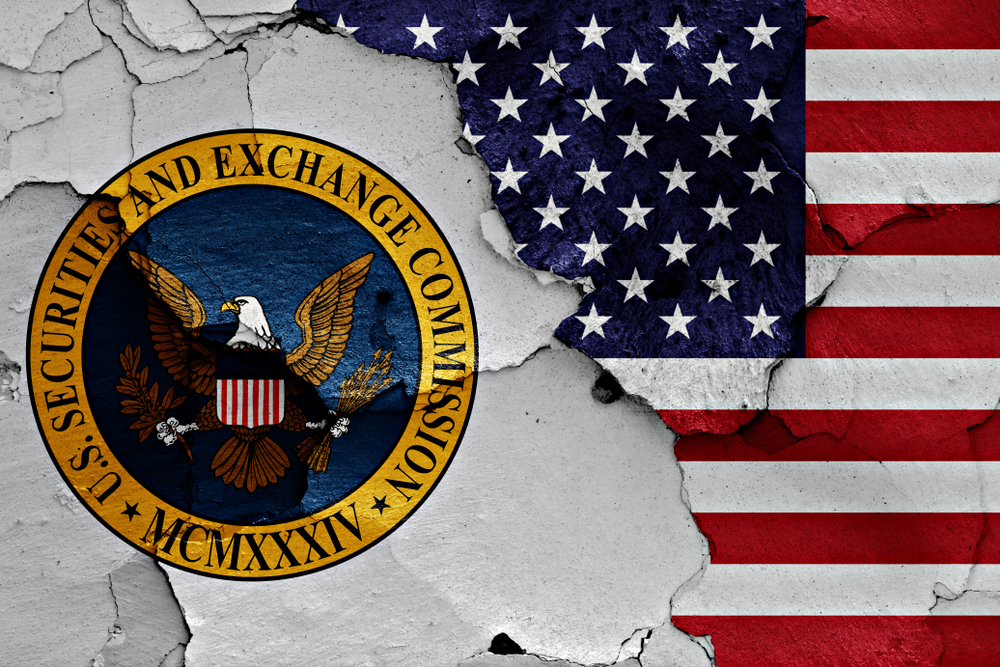The complaint lodged by the US Securities and Exchange Commission (SEC) alleging Terraform and founder Kwon misled investors to believe that its superior algorithm facilitated the UST re-pegging to $1 in May 2021.
The complaint featured in the SEC lawsuit against Terraform Labs initiated earlier this week alleging wrongdoing. While the security watchdog outlined how Do Kwon and Terraform Labs navigated the repegging, the crypto community questioned the anonymous trading firm.
US Trading Firm Profited from Terraform Labs Challenges
The community expressed concerns about the unnamed trading entity that facilitated the UST $1 peg restoration in exchange for discounted LUNA tokens. The concerns revolved around the trading partner that earned $1.28 billion in profits as Terraform Labs’ $40 billion empire crumbled.
The complaint prompted individuals privy to reveal the unnamed firm as the Chicago-headquartered Jump Crypto. The news revealing the trading firm first appeared on The Block, illustrating it is an autonomously run subsidiary of a parent group with an expansive portfolio in conventional finance and digital assets.
Kwon and Terraform Labs Transactions Hurt Retail Investors
The SEC lawsuit alleges that Terraform Labs and Kwon committed securities fraud and sold unregistered securities. SEC indicates that the transactions hurt institutional and retail investors. The anonymous trading firm that entered the exclusive market-making deal is a notable inclusion in the charges.
Surprisingly, the SEC suit only accused the UST stablecoin developer Terraform Labs with the anonymous avoid charges despite its input in the wrongdoing.
The trading firm revealed as Jump Crypto acquired discounted LUNA tokens aided by the exclusive market-maker arrangement.
Jump Crypto Footprint Evident in Terraforms Labs Activities
SEC complaint indicates that while the firm spent $62 million to restore UST to near $1 peg, it realized $1.28 billion through sales of discounted LUNA tokens. Jump Crypto earned abnormal profits from selling the assets supporting UST, which it acquired under Terraform Labs’ discounted terms.
SEC Complaint illustrates that Jump Crypto is actively featured within the Terra ecosystem. In particular, it frequently posted governance proposals besides revealing its heavy investment in the project. The suit shows that Jump Crypto build the Terra cross-chain bridge. It would later co-lead a $1 billion seed funding round for the Luna Foundation Guard.
Jump Crypto’s footprint in the Terra ecosystem is evident with its president Kanav Kariya serving on the Luna Foundation Guard board. The entity assumed the steward role for Terra’s treasury involving the multi-billion-dollar bitcoin reserve.
SEC submission in the suit demonstrates that the bitcoin reserves would deplete in May 2022 during failed attempts to repeg UST to $1. SEC disclosed that the Kwon-controlled Swiss bank account would later siphon the reserves.
Terraform’s Dishonored its Terms
Terraform Labs violated its terms for the UST stablecoin. Terraform promised investors that it offered a decentralized stablecoin backed by the state-of-the-art algorithm to sustain the $1 peg.
The Kwon-led Terra promised investors that the blockchain-based algorithm code could print and burn LUNA. The code’s control over the UST’s sibling token supply would become the shock absorber tying the stablecoin’s price towards a $1 peg.
SEC dismisses Terraform Lab’s assertions, instead indicating UST relied on human-driven market corrections. The reality portrayed little utilization of autonomous computer code for the ill-fated stablecoin to stay afloat.
SEC Dismisses Terra’s Claim of Using Algorithm
SEC submitted that Terraform Labs engaged an anonymous trading firm, later revealed by media outlets as Jump Crypto. The third party would assume the market maker’s duties for the Terra ecosystem. The terms allowed the trading firm access to LUNA at 40 cents despite the token commanding a $90 price on the open market.
The documents annexed by SEC recalled the May 2021 moments when UST depegged from the $1 peg. Terra would later reframe the eventual recovery to the algorithm’s success.
SEC dismissed the proof-of-case by emphasizing that UST stablecoin recovery involved the third-party firm input to secretly acquire the discounted Terra’s tokens LUNA to avert further UST sell-off.
The SEC argues that Terra would later extinguish the market-making agreements with the trading firm following the sell-off event. Such involved lifting the preconditions the firm would satisfy to acquire the discounted LUNA tokens.
